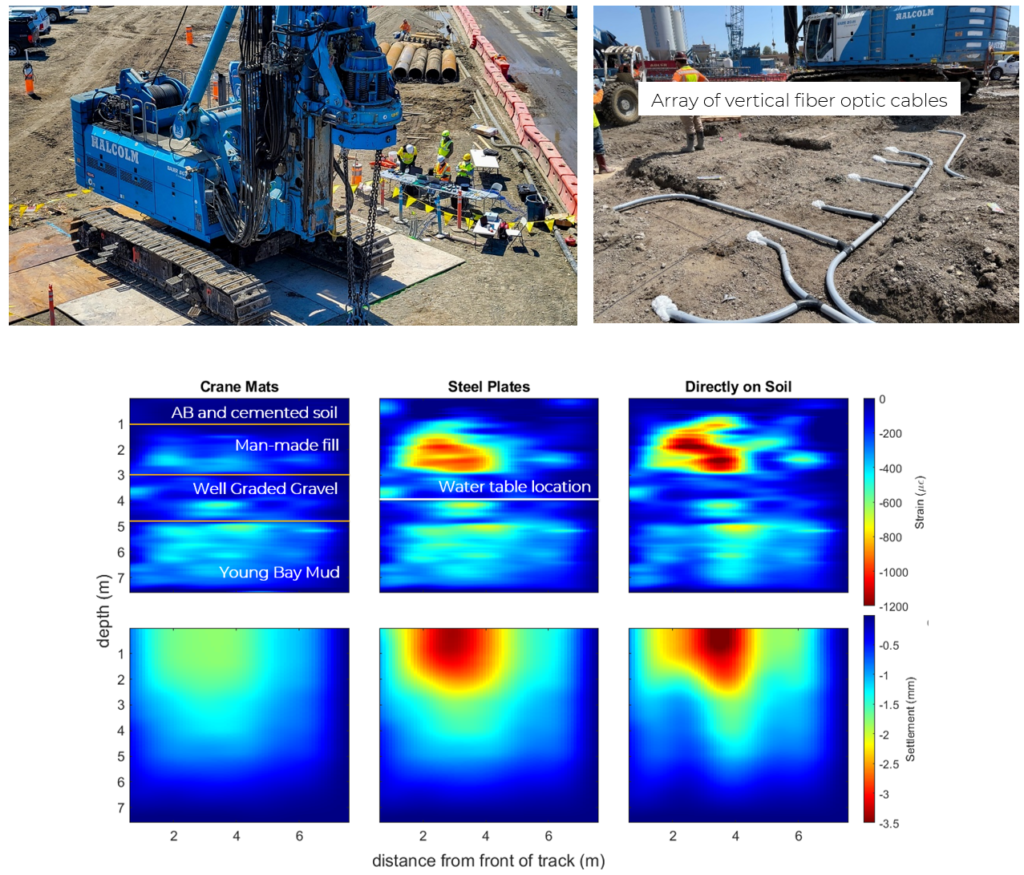Researchers: Peter Hubbard, Kenichi Soga (UC Berkeley), Peter Faust (Malcolm Drilling)
Client/Owner: Malcolm Drilling
Technologies: Distributed Strain Sensing
Publication:
Faust, P., Hubbard, P., Soga, K. (2022 est.) “Field measurements of in-Situ equipment track pressure and working platform deformation using earth pressure cells and fiber optics”, DFI-EFFC International Conference on Deep Foundations and Ground Improvement: Smart Construction for the Future.
A team from the Soga Research Group led by Ph.D. candidate Peter Hubbard is working with a team from Malcolm Drilling led by Peter Faust to assess the performance of working platforms in San Francisco when subject to large loads from drilling rigs using distributed fiber optic sensors (DFOS). A working platform is a layer of material that is placed on top of the existing soil to allow heavy construction equipment to perform their tasks without failing the underlying ground. The San Francisco Public Utility Commission’s (SFPUC) southeast treatment plant site was selected as the test site to install both vertical and horizontal fiber optic sensors into the working platform to measure the strain within the platform when a drill rig is loading the soil surface. An example of the tested configuration is shown in Figure 1. A Bauer BG 46 drilling rig was used to pull on a tie-down while sitting above the DFOS in the soil beneath. Figure 1 shows the test performed when steel plates were placed underneath the rig during pulling. The same test was conducted when the rig was sitting on wood crane mats and directly on the soil surface.
The novel use of multiple vertical distributed strain sensing lines allows for 2D vertical strain profiles to be interpolated for the soil underneath the drilling rig’s track. An example of this is shown in Figure 2. This type of strain profile can be used to estimate the stress in the soil and the capacity of the platform itself. In addition, the benefit of using crane mats and steel plates can be compared. This work will be presented at the DFI-EFFC International Conference on Deep Foundations and Ground Improvement: Smart Construction for the Future in Berlin, Germany.
